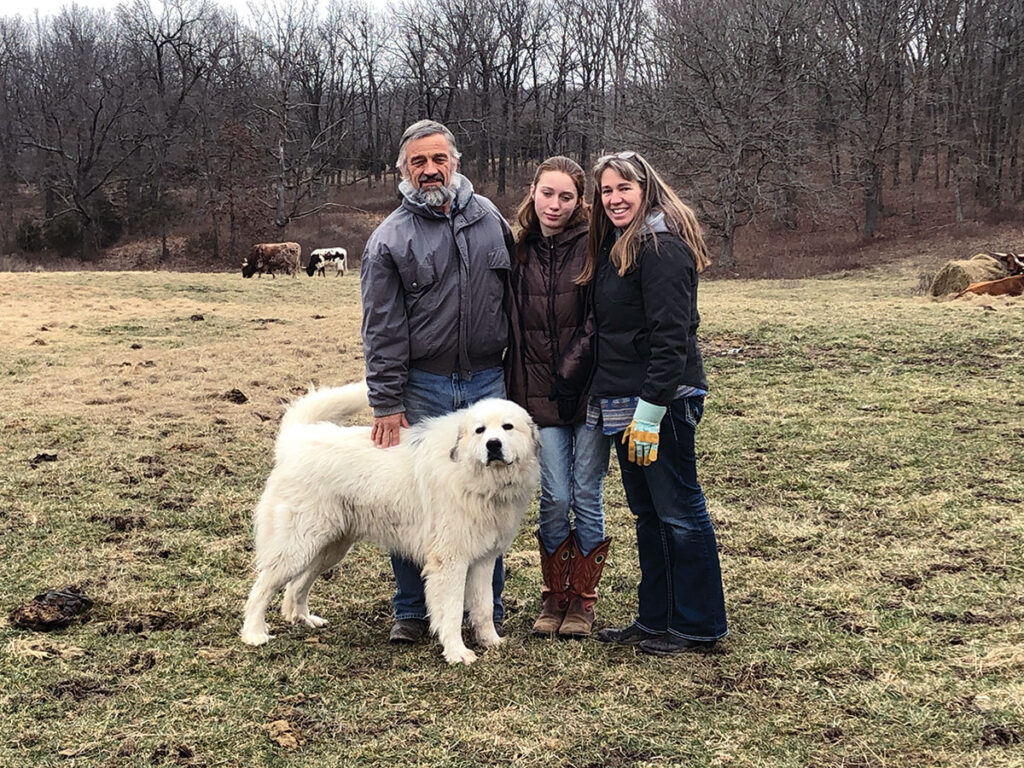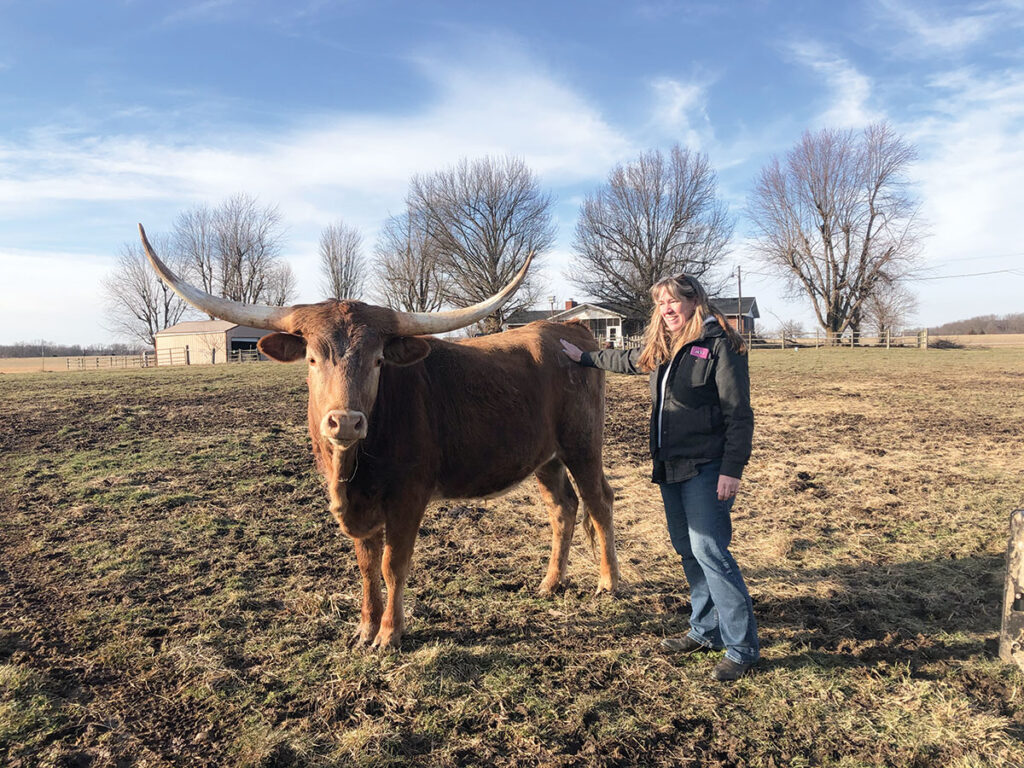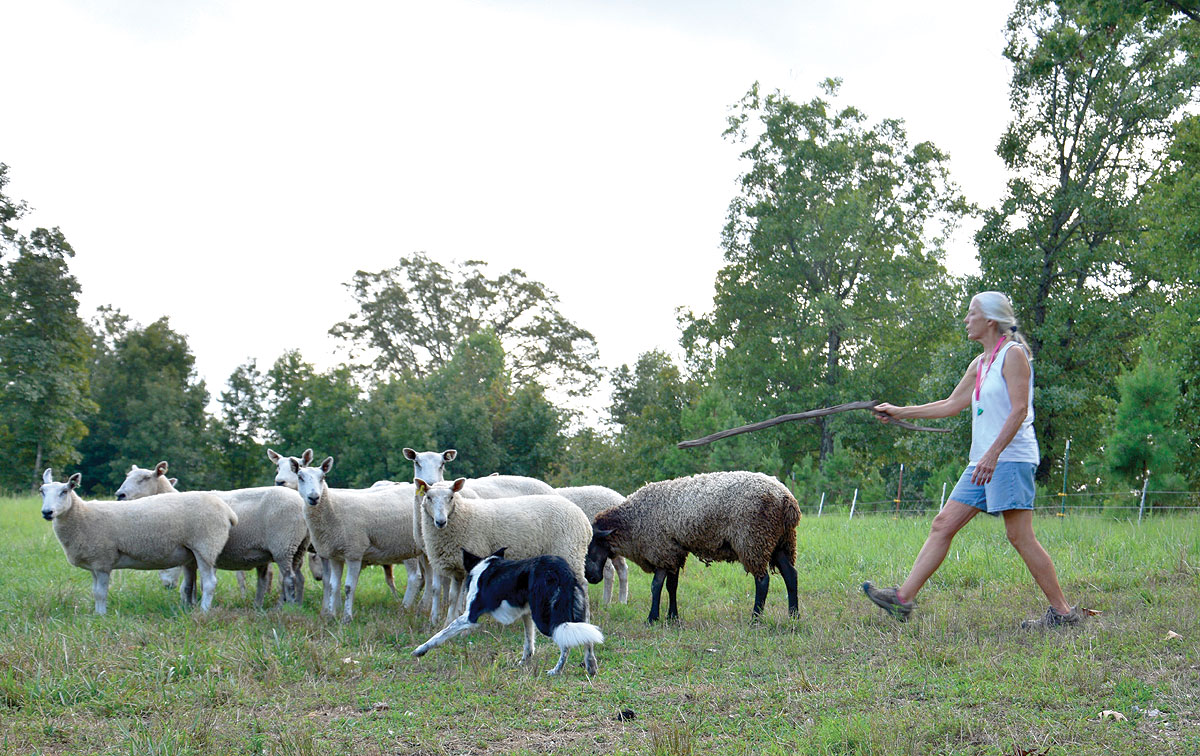
Family relocates their operation to the Ozarks from Wisconsin
Levi Mast has a longer history, more than 12 years, with Texas Longhorn cattle than with wife Amy.
They married just four years ago; but have come a long way in their journey with Longhorns.
“I fell in love with Levi first, and then I fell in love with the Longhorns,” Amy said.
Levi and Amy Mast, and Amy’s daughter Celeste, moved their L.E. Longhorn Cattle Company to Laclede County, Mo., in 2020 from southern Wisconsin.
Over a seven-month period they made multiple 600-mile trips to from their former farm in Wisconsin to their new farm west of Lebanon, Mo. In between moving trips, they attended two separate cattle shows, one in Texas and one in Wisconsin, to show cattle and purchase a few more Longhorns to add to their growing herd.
They made the move to take advantage of moderate temperatures and almost year-round pastures to promote their grass-fed operation. In Wisconsin, they fed hay almost nine months out of the year and their acreage was not enough to grow hay.
The herd currently consists of about 20 head. The Masts own a total of 106 acres in Laclede County over two properties.
Their goal is to be diversified with three revenue streams; to sell quality Texas Longhorn seedstock, grass-fed beef directly from their farm and trophy steers, which are extremely popular as traffic-stopping field ornaments.
With raising seedstock, conformation and adherence to breed standards are key, but so are extremely long horns and a variety of color patterns. Amy said the two hardest things with Longhorns are to choose a registered name and to describe what color to put on the registration form. Color in Longhorns can change drastically from birth to adulthood.
According to research from Texas A&M, grass-fed Longhorn beef is very low in cholesterol, even less than chicken. Longhorns have the ability to utilize poor forage better than other beef breeds.

“In the old days, it’s said Longhorn cattle actually gained weight on cattle drives, whereas other cattle lost weight on the long trip to market,” Levi said.
Levi plans to divide his property with electric fencing to maximize pastures with rotational grazing and keep about 30-plus acres for hay. He had the property soil tested and subsequently had it fertilized. This summer he plans to apply a fish-based liquid foliar and/or liquid kelp and will then continue to monitor the soil for additional needs. Since he is new to Missouri, he said there are many things different than Wisconsin, which will require him to adjust as he goes. He may add poultry to follow the herd to help with parasites. The Masts offer free-choice granulated salt and minerals. Levi also uses protein tubs and will switch out in spring with one that assists with fly control. They only use grain for training calves to the creep feeder, when weaning and sometimes to give show cows “a little extra condition.”
“We prefer not to vaccinate, but down here in Missouri there are things we didn’t even know existed such as blackleg,” Amy said. They do plan to vaccinate for blackleg, and treat with Ivermectin in both spring and fall for parasites. Once they get their rotational grazing up and running, they are hoping to cut back on the worming.
They love to show others the breed, whether it is someone buying their first Longhorn or just someone who likes the way they look. At their Airbnb on the second property, visitors get to see the Longhorns up close and can arrange to have a tour of the main working ranch.
The Masts say there are many great opportunities for raising cattle in Missouri, but at the same time it is different from what they knew in Wisconsin. From the different types of pastures, to parasites and diseases, and differences in regulations in how meat can be processed; there is a lot to learn about the state they now call home.







